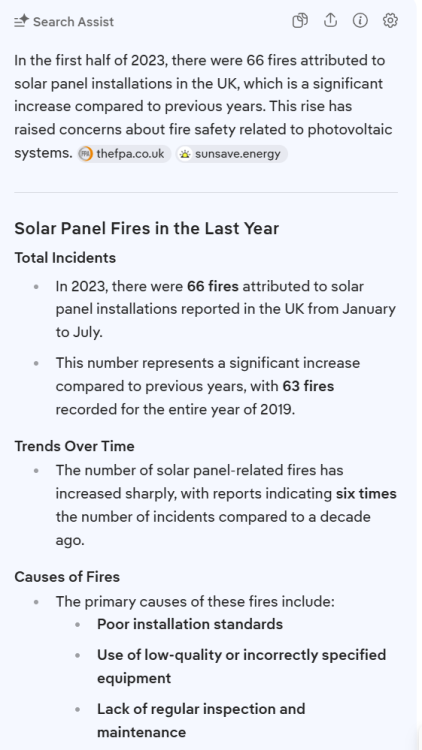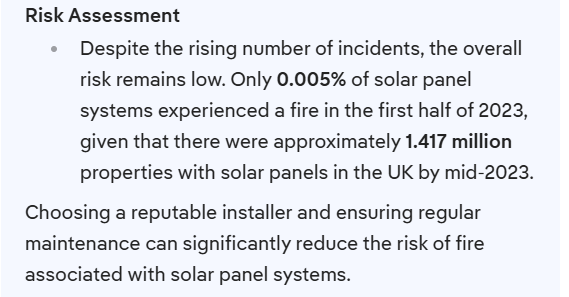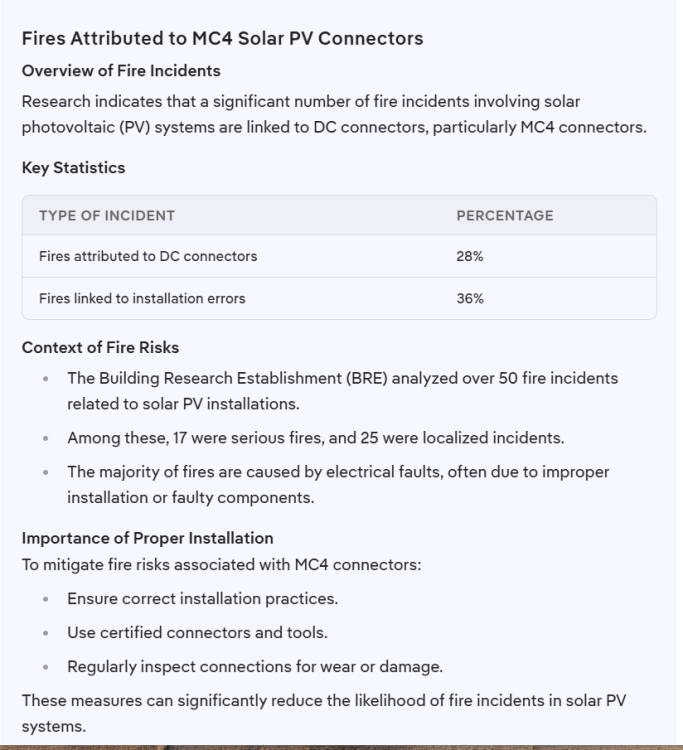
Bramco
Members-
Posts
739 -
Joined
-
Last visited
-
Days Won
1
Everything posted by Bramco
-
MVHR installers or alternatives?
Bramco replied to Swampy's topic in Mechanical Ventilation with Heat Recovery (MVHR)
No. Except delete the words 'most likely in the 1st sentence of the 2nd para. -
DPM External Flap - what to do with it?
Bramco replied to AppleDown's topic in General Construction Issues
I'm pretty sure this was how ours were done - the join then site behind any cladding. Do make sure that you get them 'permanently' fixed. We had one bit that wasn't that well fastened up and in time started to vibrate in high winds (albeit from a very specific direction) but it took a while to work out what the heck was going on. -
Pretty sure it's not that. If I look at the graphs on the TADO app, you can see periods where there is a lost connection - and these can be from a few minutes to a few hours. And it's only one thermostat that's lost the connection, the others are fine. So it's almost certainly the individual thermostat connection to the RF hub. Not the hub connection to the interweb.
-
@SteamyTea - I've realised that it's actually an RF system to the TADO hub - so my original post should have said that. Apologies for anyone thrown off track by that. So any wifi fix wouldn't really help - the TADO hub has to be wired into an internet switch, or physically into a router. We can't move our TADO hub, so hopefully the Speedfit solution will work.
-
@-rick- thanks for the clarification... I might actually try the speedfit wired controller (I should have said our 3 thermostats are wired) -> https://www.johnguest.com/gb/en/products/jg-underfloor/heating-controls/wired-heating-controls/240v-wired-programmable-room-thermostat This should be a drop in replacement for the TADO thermostats we have. It looks like the 'smarts' can be turned off and each thermostat can be linked with the Speedfit app, i.e. it has wifi (2.4GHz) built in. So no RF to gateways etc. £60 from screwfix in black so worth a punt. PS @SimonD EDF do, do a black RF unit but it looks like you have to pair it with one of their programmable 4 zone controllers, or an RF manifold controller, so quite an outlay to see if it works. And it's still RF which I think is the issue with the TADOs we have.
-
Thanks John, I'd looked at those but wasn't sure it was all local... I'll check them out again. The ASHP is controlled (on/off) through the Heatmiser UFH controller. The ASHP itself is a Cool Energy unit, so no fancy thermostatic control just an internal interface and web interface to set the settings etc. So the question is really about the zone thermostats... And you're right about Home Assistant - I'm not going there... Oh and I should have mentioned aesthetics - those EPH CP4 thermostats are some of the ugliest I've seen!! 🙂 But I will check the specs... Wiser might work but I think it might be like the first ones we canned - you can't turn off 'smart' things like 'we'll get your house warm before you've programmed the heating to start!' - which for us, batch charging our insulated slab on cheap rate is unworkable as it would start at some 'random' ('clever' in it's mind) time outside the cheap rate window. We have friends who stripped theirs out as well... Thanks everyone for chipping in. I'll continue our searches and report back if I find anything that works.
-
Hi, We only use ours thermostats (3), so we can run a schedule at night on the cheap rate (ASHP, OIG, insulated slab with UFH, just in case anyone asks). We also want/need to be able to connect remotely. We replaced the original thermostats with some from TADOs which work OK for what we want, i.e. a dumb temperature limiter with the ability to run the schedule and remote access so we can override things if needed, check things are working OK and occasionally when its really cold run the ASHP for a few hours in the day to top the slab up. To cut a long story short, we've been away and while we were away, one of the 3 thermostats occasionally lost wifi contact - that's OK you'd think but with TADO, if it happens just before a scheduled run, then the schedule isn't started. Also, if it fails during a scheduled run, it will stay on until it reconnects with wifi, or you manually override it. So basically the schedule is in the 'cloud'! So the TADOs have to go..... I've searched on-line and obvs there are loads out there that would do the schedule and the remote bit but reading the installation manuals and specs, none of them say anything about what happens if wifi is lost, i.e. whether the schedule is remote or local. So does anyone have experience of/know about a thermostat that will run a schedule even if it's not connected to wifi and can also be accessed remotely. Oh! and it has to be available in black, otherwise I'm going to have to hack the tados with some kind of home brew.. Thanks in advance if you can help.
-
It looks like the windows don't go up into the pointy bits at the top - so have you thought about setting external venetians into the top cill? These are very effective. A bonus is that in the winter when it's sunny, you get a lot of solar gain but in the summer, the blinds cut out all the solar. We've done this: Note to self, must get some photos done with the drive completed - it's only been 3 years!!! There are a few people who have the same type of external blinds - our supplier was Hallmark Blinds (I think they are actually made in eastern europe)
-
Planning consultant recommendations please
Bramco replied to timhowes's topic in Planning Permission
PM'ed you Tim. -
What insurance needed to move in before completion?
Bramco replied to YorkieSelfBuild's topic in Self Build Insurance
We have timber frame, crinkly tin roof and cladding, as well as timber cladding and render. Also a small flat roof section. We were with Direct Line (and still are for contents) but they wouldn't do the buildings cover. They put us on to Gallaghers who were v good, although the price seems to jump around a bit. Last year the quote was about £500, so I looked around using links from here and couldn't get anywhere near Gallaghers, so we stayed with them. This year the quote was around £400 - so they got the business again. -
Looks like the party is over....
Bramco replied to Beelbeebub's topic in Air Source Heat Pumps (ASHP)
I went to uni in 1969, was involved in student politics, i.e. the student's union. Apart from some big 'events/demos' I don't think students were particularly involved in Politics, the 'clubs' aligned to the major parties only had a few members. Compare that with the numbers a while back marching for Gaza, climate change etc. And don't forget, back then less than 10% went to university. Thanks to Blair, almost 50% go. And don't get me started about the lack of vocational training as a result. -
Things may have changed but we included an invoice (for windows, including installation) in our claim and HMRC told us that the company should have zero rated the invoice, so we should go back to them and get them to re-issue the invoice without VAT and refund us the amount. So to avoid later hassle it may better to make sure the contractor is happy to zero rate the amount. We had to supply the windows people with copies of the planning permission so they were covered if their VAT inspector asked any questions. They were only too happy to sort things out - fortunately!
-
How can I salvage this flooring (should I?!)
Bramco replied to Flora's topic in Wood & Laminate Flooring
Belt sanders can leave dips - although it's years since I've done this. You could use an eccentric sander - Festool are brilliant but expensive - you may be able to rent one. But as @Big Jimbo says it will take quite a while - but you'd get a better finish. You'd need a detail sander for the corners and edges obvs. -
Payment Terms - Pay everything upfront?
Bramco replied to Mulberry View's topic in General Self Build & DIY Discussion
FWIW - we had no problem with RK Doors - very good, in terms of getting the spec right etc. - can't remember the payment details but everything was delivered on time as promised. Also v pleased with the door. -
Our reason for ground mounting was aesthetics and the angle of the roof, not fire risk - and we have plenty of room 🙂
-
-
Majority of fires ... often due to improper installation or faulty components. What they haven't analyzed is what the cause of the fires were that were attributed to faulty connectors. So, as with anything - make sure you do things properly and double check that the connections are good.
-
They probably would wouldn't they - as the actress said to the bishop. The main thing I found was that it was important to make sure the pins/sockets were properly clicked into the plastic housing. It's surprisingly easy to not quite get one home and then when you join the two halves of the joint, one bit pushes the other side back out which means there isn't proper connection. But that may not be the case with expensive 'branded' connectors. I wonder how many fires there have been? And how were they attributed to the connectors and who checked that if the fires were caused by the connectors, which brand of crimp tool was used. Or could they have been caused by not clicking the crimped part into the housing properly?
-
I bought a generic one from eBay. 30 connectors and worked fine. Would almost certainly work for many many more. MC4 connectors are all standard. A £350 tool has to be something a professional would buy to install fields full of panels. Imho all you need is a cheap one from eBay, or Amazon.
-
Another 'Cool Energy' heatpumps thread
Bramco replied to HughF's topic in Air Source Heat Pumps (ASHP)
Interesting spreadsheet but I think you need the flow and temperature to work out the kW generated against the mains current and voltage as the input. There are kits to do this -> https://docs.openenergymonitor.org/applications/heatpump.html They also have a public website where you can publish your data - useful to see the CoPs being achieved in the real world. https://heatpumpmonitor.org/ -
Another 'Cool Energy' heatpumps thread
Bramco replied to HughF's topic in Air Source Heat Pumps (ASHP)
Must look into the engineers menu.. Thanks for pointing this out. -
Another 'Cool Energy' heatpumps thread
Bramco replied to HughF's topic in Air Source Heat Pumps (ASHP)
@dpmiller Thanks for posting this - it makes some things a lot clearer in terms of the settings. Wish I'd seen it before I built a little control box to switch from heating to cooling, as it looks as though this can be set up to change automatically based on the outside temperature. There are two pages though that beg for more explanation - the antifreeze function and the defrost function. On the antifreeze function - it's not clear how this is activated, or is it always on? And if it's always on, does this mean that no glycol is needed? And on the defrost function, it's not clear how any settings can be changed. Anybody any more detailed explanation? -
Planning conditions to be discharged Surface Water Drainage Strategy
Bramco replied to maxiav's topic in Planning Permission
The officers report was satisfied by the condition in the planning document. It caused the LPA to write the condition. The condition asks for a surface water strategy not a plan. So don't submit a plan. A strategy that would probably satisfy the planners is to state that given it is a replacement dwelling, surface water will be dealt with in the same manner as for the previous dwelling. If you do this, you need a) know how it was dealt with before and b) know, or can show that the replacement dwelling with any paved areas is similar in m2 to the old dwelling. So how has surface water been dealt with in the past? And what's the difference in surface area? Also, is there a water course nearby? We are in a flood zone with a dry (99% of the time) water course at the front of the plot. We were looking at a massive expense in excavation, crates etc. for a soakaway. We approached the County Council flood team to get their help with this. One thing we pointed out was that the site drained into the water course in the past before there was a dwelling, so while with the dwelling there would be a faster release into the water course, the amounts would be the same. we did some calculations on this. We also played the environmental card - it would be scandalous to bury so much plastic etc. etc. They agreed and all they wanted was a plan for the discharge point and then they came and inspected the work when it was completed. So the cost in the end was a concrete extension to the side of our culvert a bit of pipe and a special discharge valve. We also had a condition to submit a plan for emergency lighting (re disturbance of wildlife I think). We satisfied this by stating that we didn't intend to install any emergency lighting. 😄




